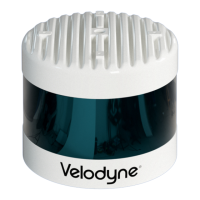Chapter 11 • Troubleshooting
This section provides detail on how to troubleshoot your sensor, how to request technical assistance, how to have the
sensor repaired, and how to replace the fuse in the Interface Box.
11.1 Troubleshooting Process
86
11.1.1 Turned DHCP On, Lost Contact With Sensor
88
11.2 Service and Maintenance
88
11.2.1 Fuse Replacement
88
11.3 Technical Support
89
11.3.1 Purchased through a Distributor
89
11.3.2 Factory Support
89
11.3.3 Support Desk
89
11.4 Return Merchandise Authorization (RMA)
89
11.1 Troubleshooting Process
Problem Resolution
Interface Box LEDs
do not light
Verify:
Power connection and polarity.
Fuse in the Interface Box is okay. See
Fuse Replacement on page 88
if it’s blown.
Rotor doesn’t spin
Verify:
Power connection and polarity.
Fuse in the Interface Box is okay. See
Fuse Replacement on page 88
if it’s blown.
Unit spins but no data
Verify:
Ethernet wiring is functional.
Packet output using another application (e.g. VeloView/Wireshark).
Receiving computer's network settings.
Correct static IP address in your computer's network settings.
No security software is installed which may block Ethernet broadcasts.
Laser ON radio button is selected in Web Interface
Configuration Screen on
page 68
.
Input voltage and current draw are in proper ranges.
Can see data in Wire-
shark but not
VeloView
Wireshark sniffs packets promiscuously but VeloView does not. VeloView needs permission
to receive packets from the system firewall, if active.
Check:
No firewall is active on receiving computer.
Table 11-1 Common Problems and Resolutions
86 VLS-128 User Manual

